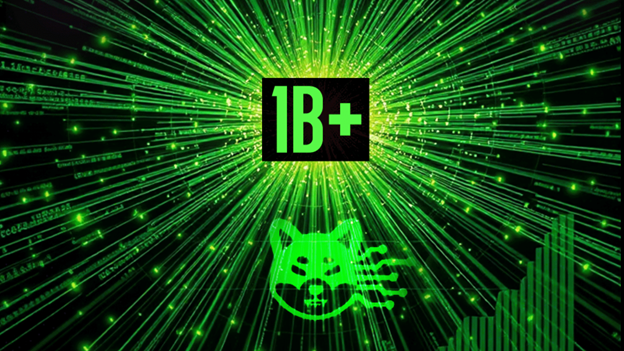0x12…qrst

Shibarium has surpassed a staggering one billion transactions, eighteen months after launch—proof that it’s not just another Layer 2 network, but an evolving digital backbone. The question now: can it become the beating heart of decentralized applications?
The digital echo discussed in these pages finds a specific voice in Shibarium. One billion transactions reverberate across this Layer 2 network, built for the Shiba Inu ecosystem. Reaching this milestone 18 months after launch prompts a closer look – assessing the substance and driving forces behind the sheer scale of activity generated within this unique digital environment.
The journey toward that billion-transaction echo began with a fundamental problem: congestion on the digital main street. The Shiba Inu project, with its widely held SHIB token, primarily resided on the Ethereum blockchain.
But Ethereum, powerful as it is, often functions like a gridlocked city during peak hours. High traffic translates to slow speeds and, critically, expensive “gas fees” – the cost of doing business.
For the vast “Shib Army” community, often engaging in smaller transactions, these tolls became a significant barrier. Shibarium was conceived as the solution: an express lane, a Layer 2 network designed explicitly for the SHIB ecosystem.
Credit: ShibariumScan
Its architecture promised relief. As a Layer 2 scaling solution, Shibarium operates alongside Ethereum, processing transactions related to SHIB, LEASH, TREAT and its own vital gas token, BONE, on its own, less congested rails.
The core premise was faster processing and drastically lower fees. Instead of paying variable, often high, tolls in Ethereum’s ETH, users navigate Shibarium by spending small amounts of BONE. This dedicated token was deliberately chosen to keep the cost of interaction minimal, aiming to unlock the very network activity that high fees on Ethereum suppressed. It was an attempt to build a space where digital operations could flow more freely.
Shibarium’s arrival in August 2023, however, was less a smooth opening. Initial demand quickly overwhelmed the system. Transactions stalled, infrastructure strained and the pseudonymous development team made the difficult call to pause operations. This public setback, unfolding under the watchful eyes of a massive online community, tested the project’s resilience right out of the gate.
But then came the rebuild and relaunch. And following that initial hiccup, Shibarium entered the period where time acts as a filter.
Instead of explosive growth or sudden collapse, the network settled into a persistent, if unremarkable, rhythm. Data from Shibariumscan.io, the network’s public dashboard, doesn’t show a single killer app driving exponential adoption.
Instead, it reveals eighteen months of steady accumulation. Daily transaction counts rose and fell, influenced by minor project launches or market shifts, but the overall trajectory was one of consistent use.
Token transfers, decentralized exchange swaps, potential NFT activities, smart contract calls – countless small operations, performed day after day, built the cumulative total. This wasn’t hype but the quiet grind of a network in operation.
That steady accumulation, that persistent hum, eventually pushed the counter past one billion. It wasn’t a milestone marked by fireworks but by the simple, ongoing function of the network itself – a testament to endurance after a difficult birth. It demonstrated that Shibarium, unlike many projects that vanish after launch, had survived the initial filter of time and maintained operational consistency.
Reaching one billion transactions firmly places Shibarium among active Layer 2 networks. It validates the core technical premise – the network functions and handles volume.
This is the critical challenge in interpreting Shibarium’s milestone. Its BONE-based gas fees are undeniably low, making it extremely affordable to transact.
This accessibility is a core part of its value proposition, especially for the SHIB community. But it also means that distinguishing truly purposeful activity (like engaging with a DeFi application or participating in a game) from simple token shuffling or automated processes requires deeper analysis than the transaction count alone can provide.
While established L2s like Polygon or Arbitrum boast complex ecosystems and high total value locked (TVL), Shibarium’s landscape is still developing. Its significance, therefore, might lie less in the complexity of current transactions and more in the demonstrated persistence of its user base and infrastructure.
For the Shiba Inu development team, Shibarium has always been presented as more than just cheap transactions. It’s positioned as the bedrock for future ambitions – a platform intended to host a wider suite of applications, integrating gaming (like Shiba Eternity and Agent Shiboshi, metaverse components SHIB: The Metaverse, DeFi protocols, and perhaps future elements tied to tokens like TREAT. The goal is to evolve Shiba Inu from its meme coin origins into a multifaceted, self-sustaining digital economy.
In this context, the billion-transaction milestone serves as crucial validation. It proves the engine works and has run reliably for a significant period. It shows the community will use the tools provided.
But it doesn’t automatically equate to the sophisticated, high-value ecosystem envisioned. That requires attracting developers, fostering innovation, and seeing complex applications gain real traction on Shibarium’s rails.
The journey from a billion simple transactions to a thriving, diverse digital economy is the next critical phase. Shibarium has demonstrated endurance; the next goal is to cultivate depth.
The persistent hum is undeniable, an echo proving the network is alive and functioning eighteen months on. Whether that echo foretells the construction of a lasting digital city, is the story yet to be written.